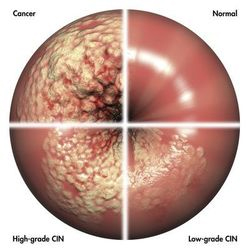fibroids

What are uterine fibroids?
Who can get fibroids?
How are uterine fibroids treated?
Medical therapy: Medical therapy may include the use of drugs to shrink the fibroids or to provide control of the symptoms. Medical therapies are only temporary and are used awaiting surgery or menopause.
Surgical therapy: There are many surgical options for uterine fibroids:
Myomectomy : It is the partial or total removal of the fibroids from the wall of the uterus. It can be done with the help of minimal invasive techniques like laparoscopy or hysteroscopy depending on the size, number and location of the fibroids. Since the uterus is not removed, the woman will still be able to get pregnant after the surgery. Sometimes fibroids can grow again after surgery.
Hysterectomy: It is a procedure in which the entire uterus is removed. It is done in older women or in those who do not wish to have any children further.
How does one decide which treatment is the best?
Minimally Invasive Surgery
What is Minimally Invasive Surgery?
This is done with the help of a special type of surgery called Minimally Invasive Surgery (MIS), also known as laparoscopic surgery or Key lock surgery. MIS is a modern surgical technique in which operations in the abdomen are performed through small incisions (usually 0.5 cm- 1 cm) instead of making larger incisions needed in traditional procedures
How is it performed?
What are the advantages of MIS?
Endometriosis
What is Endometriosis?
Why do some have it and some don't?
How will I know if I have Endometriosis?
- Increasing menstrual pain is a common indication of the development of endometriosis. The pain may prevent normal work or social activities
- The pain may be different from the more common form of menstrual pain which tends to decrease as one grows older
- The pain may be present both in the middle and sides of the abdomen and may not respond well to any painkillers
- How is Endometriosis definitely detected?
- Laparoscopy with removal and examination of the affected tissue is the only definitive way of diagnosing endometriosis.
- Ultrasonography can detect only ovarian cysts
- How is Endometriosis associated with infertility?
Infertility may be the only symptom in women with endometriosis. Though the disease often commences in the teens, unfortunately diagnosis in young women is often delayed because of difficulty in distinguishing endometriosis from the more common type of menstrual pain.
Relation between Endometriosis and Infertility
- If the endometriosis damages the tubes and the ovaries then this will significantly reduce the woman’s ability to conceive as the movement of egg and sperms will not be normal.
- Even if the tubes and ovaries are not damaged, endometriosis can still affect the movement of sperms, egg pick up by the tube, egg fertilisation, embryo growth and implantation.
- Key points
- There are many women who live with symptoms for many years before diagnosis of endometriosis is made.
- If endometriosis remains undetected and untreated for long, it may cause severe damage to the pelvic tissues.
- It is important to seek medical help as early as possible whenever you suspect suffering from any of the symptoms of endometriosis.
- Diagnosis through laparoscopy and treatment of endometriosis is the best way to prevent infertility.

Cervical cancer is one of the most common cancers affecting women. In India it accounts for 80% of all the genital cancers in women colposcopy is an OPD procedure does not require the patient to be fasting/anaesthesia.
Colposcopy is an important diagnostic test for the diagnosis & evaluation of early stages of cervical cancer (Cervical intraepithelial neoplasia) (CIN) and preclinical invasive cancer.
It allows magnified visualization of the site where cervical cancer occurs. It shows the extent of the lesion (affected part) on the cervix & enables targeted biopsies , along with directing treatment e.g. cryothearapy).
Minimally Invasive Surgery
What is Minimally Invasive Surgery?
This is done with the help of a special type of surgery called Minimally Invasive Surgery (MIS), also known as laparoscopic surgery or Key lock surgery. MIS is a modern surgical technique in which operations in the abdomen are performed through small incisions (usually 0.5 cm- 1 cm) instead of making larger incisions needed in traditional procedures

